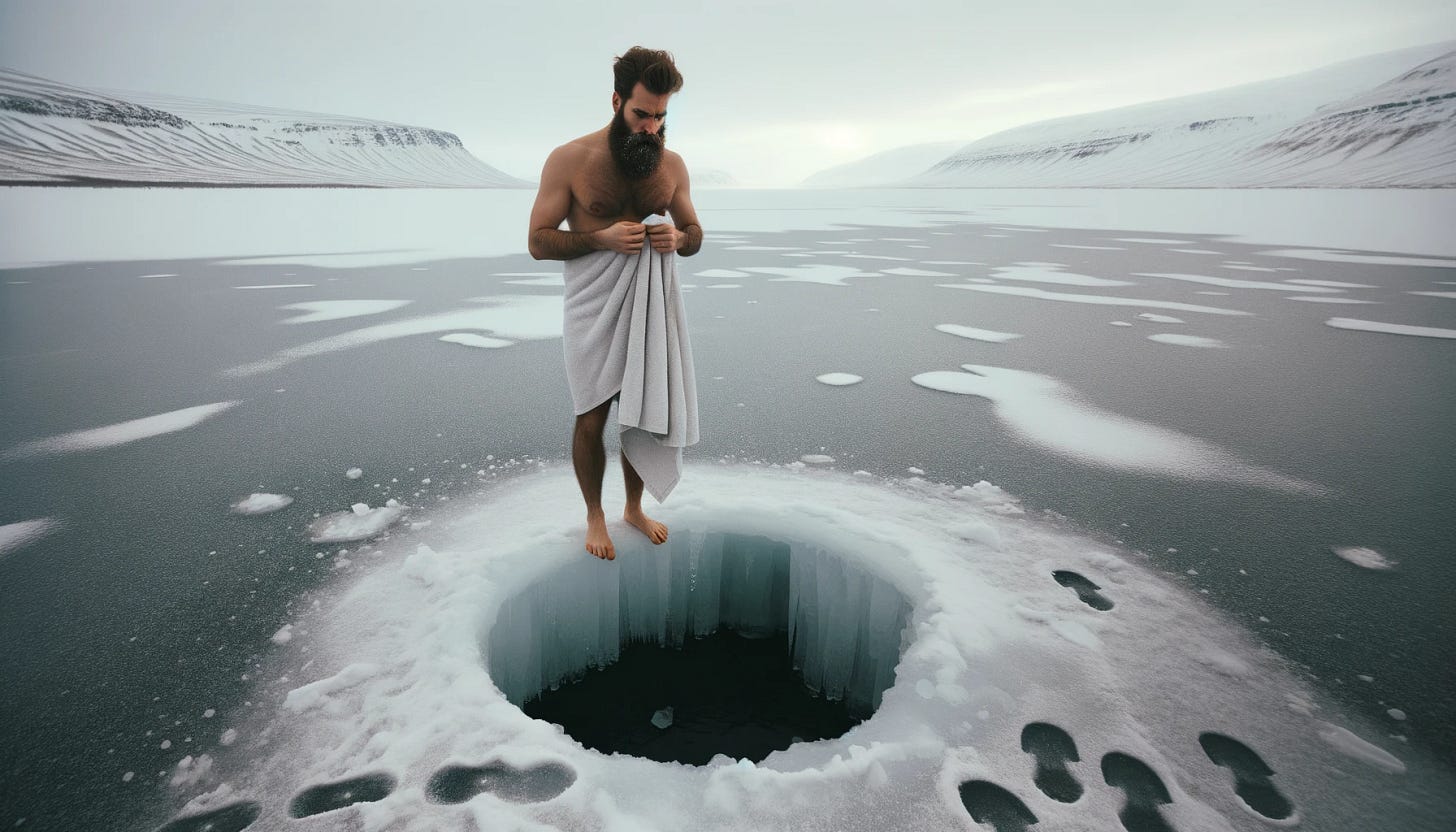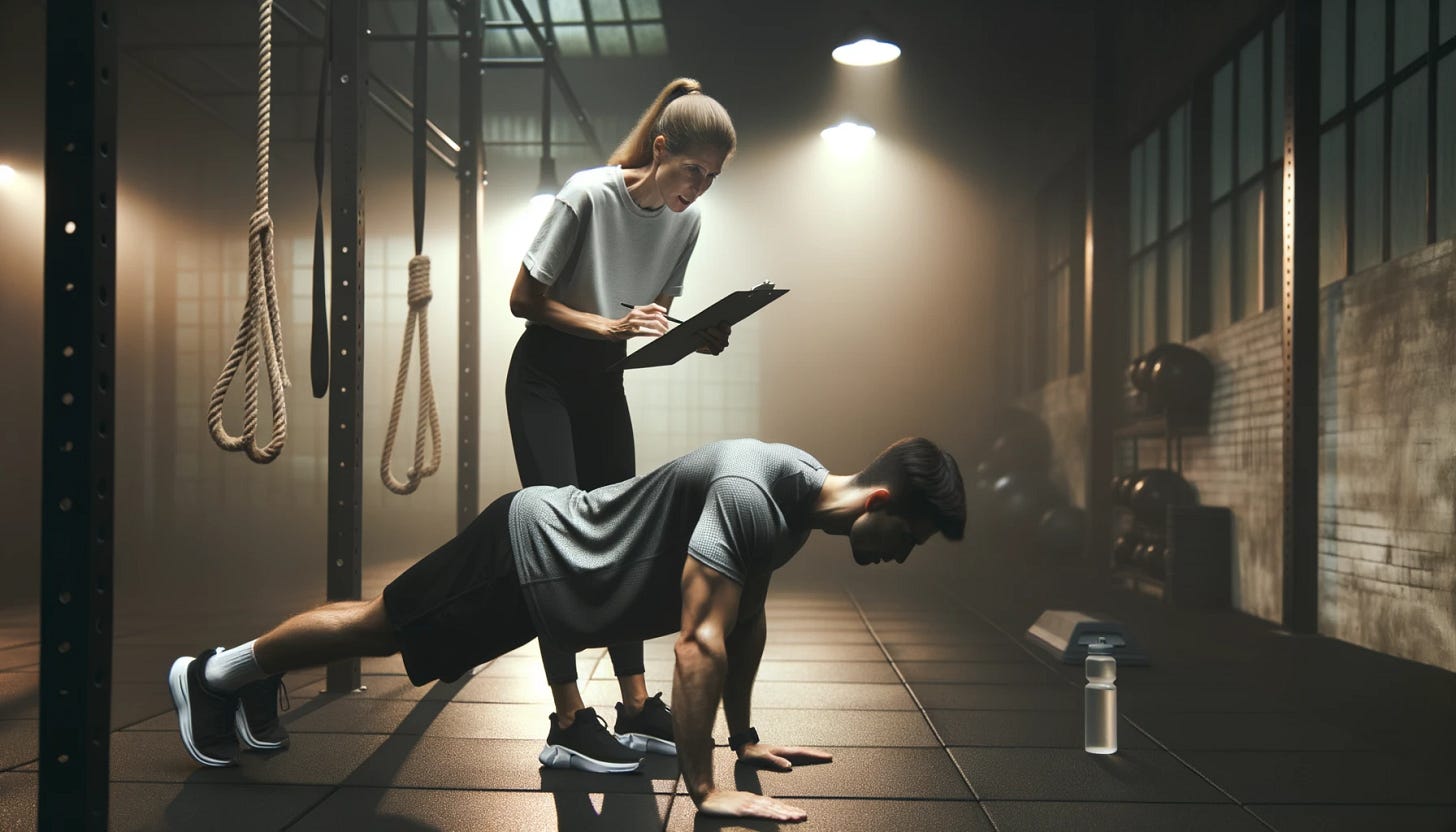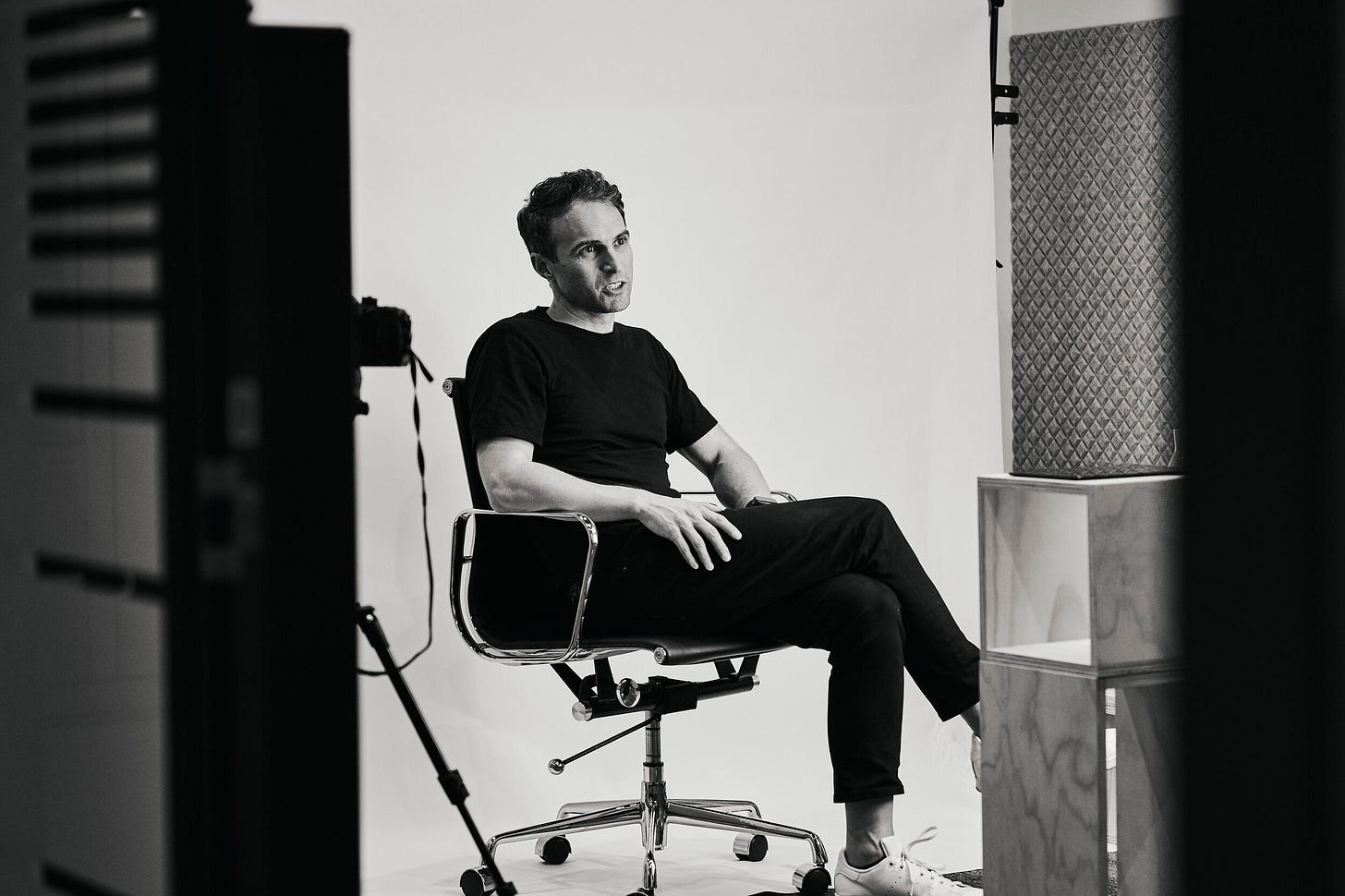FUTURE MINDS - Why Your Comfort Zone Might be Holding You Back
Curated, Science-Driven Insights into the Brain.
Hello everyone,
I trust you've been enjoying the Placebo newsletter and perhaps already implementing some of the placebo hacks to improve various aspects of your life. I've personally found them to be quite effective. Recently, I had the opportunity to put one of these hacks into action for a TV interview, we can’t always voluntarily switch on instant confidence, but we can use our rituals, dressing up etc. to boost it! This is called self placebing!
Also, for those of you in Australia, you can catch me live every Friday at 1.00pm on ABC Sydney 702 with Josh Szeps.
Now, I'm thrilled to share an exciting update regarding our newsletter. We're committed to delivering even more curated, valuable insights to you. In each edition, you can now look forward to our 'Eyes Wide Open' section, where we'll unveil cutting-edge discoveries and new insights into the world of mental imagery and aphantasia. Moreover, I'm delighted to introduce the 'Neuro Hacks: Craft a Better Life' section, meticulously developed to equip you with practical takeaways that can significantly enhance your life. These insights are designed to empower you on your journey to personal growth and improvement.
This week, our topic will gently nudge you out of your comfort zone, offering a refreshing perspective on embracing positive yet uncomfortable change. So, as you continue reading, be prepared for a transformational journey that promises growth, learning, and, most importantly, enjoyment.
Why Your Comfort Zone Might be Holding You Back
There's something so nice about being comfortable, isn’t there? Being at just the right temperature, having a full stomach, and having endless entertainment at our fingertips, it's perhaps ironic that many of the newest trends in health involve paying money to find ways to push ourselves into discomfort.
From the ice bath trend to fasting fads, it seems we're waking up to the idea that a sprinkle of stress might just be what the doctor ordered. This concept isn't just a passing trend; it's rooted in science and is called 'hormesis’ – a little bit of something can be good for you, while a lot of that same thing — well not so much.
To illustrate, consider hormesis as a young sapling (a very young tree) facing the wind. A gentle breeze nudges the sapling, encouraging it to grow stronger roots and a more robust stem, than with no wind at all. This prepares it for stronger winds in the future. But if the winds are too violent from the start, the sapling may get uprooted or broken. Similarly, a little challenge or stress can make organisms more resilient, but too much can be harmful.
The Analog Age: Getting Unplugged from Comfort
Living in 2023, surrounded by the benefits of advanced tech and luxurious comforts, one might wonder: Do we still need to "break a sweat"? Well, as it turns out, our biology might be a tad more analog than our digital self would suggest. If you think of the body as a dynamic system, it's always tuning itself to its surroundings. Be a couch potato and your body tunes into a "low-energy" mode - muscles weaken, and cognitive sharpness decreases. It's as if our bodies know that without a challenge, there's no growth.
“Be a couch potato and your body tunes into a "low-energy" mode - muscles weaken, and cognitive sharpness decreases. It's as if our bodies know that without a challenge, there's no growth.”
Picture this: a man, Wim Hof, invites you to take a dip in a bath filled with ice. Your initial reaction? Probably a mix of horror and disbelief. But what if I told you that this frigid plunge, a cornerstone of the Wim Hof Method, is a secret gateway to unlocking the potential of the human body? Dive into the icy waters and you're not just combating cold - you're kickstarting a physiological reaction. From firing up your brown fat's built-in furnace to launching a rapid response team to tackle inflammation, your body's response is in action. But it's not just about the body; the mind plays its part too. As the cold numbs your skin, you'll feel endorphin-fuelled euphoria. And as days turn to weeks, watch as your focus sharpens, stress reduces and your mental resilience strengthens.
There is a similar effect with heat. Stay in a hot sauna all day and you might not fare too well. However, like with the cold, there is a sweet spot, 20-30min at 85-90deg C., which can not only give you a mood boost but also boosts something called heat shock proteins in your body. Recent research shows a dose-specific effect, the more times you use a sauna a week the larger the effect, on all-cause mortality – you are less likely to die from all causes.
The Paradox of Choice and Control:
Studies have consistently shown that when humans have control over a stressor, even if it's uncomfortable, they tend to fare better both psychologically and physically. Animals who have control over stressors display fewer behavioural and neurochemical signs of distress than those who do not, even if the actual stressors are the same. The brain, it appears, processes 'chosen discomfort' and 'imposed discomfort' in different ways.
Then there's the matter of how we perceive the discomfort. Research from the world of sports psychology tells us that athletes who embrace discomfort, seeing it as a necessary part of growth, tend to have higher levels of performance and satisfaction. In contrast, those who feel that the discomfort is forced upon them, without rhyme or reason, are more likely to burn out or experience decreased motivation. It's as if the story we tell ourselves about the discomfort - whether it's a chosen or an imposed burden - shapes our response to it.
“It's as if the story we tell ourselves about the discomfort - whether it's a chosen or an imposed burden - shapes our response to it.”
Have you ever wondered why runners often talk about the 'runner's high'? That euphoric state is thanks to endorphins, the body's natural painkillers. Engaging in self-controlled discomfort, like a challenging workout, triggers a release of these feel-good chemicals. While endorphins can also be released in situations of forced discomfort, the levels and the associated feelings of well-being are typically higher when the activity is self-chosen. It's as though our brain rewards us for stepping out of our comfort zone on our terms.
A maladaptive instinct
We have evolved to seek out comfort and move away from discomfort. It’s an instinct that taken too far, or with too many resources of abundance, like today for many of us, becomes maladaptive. It’s worth keeping this in mind when you crave more comfort and pull away from discomfort.
Neuro Hacks: Craft a Better Life
Wondering how to start? It's simpler than you think. Building habits is not about perfection, but consistency. Start small. Floss one tooth only for a few weeks. Stand outside the gym. Baby steps, always.
Imagine, for a moment, a world where waking up at dawn or hitting the gym feels as automatic as brushing your teeth. Sounds like magic? Not quite. It's the art and science of habit formation, as decoded by James Clear in 'Atomic Habits'. Let's take a quick journey through his method:
Make It Obvious: Start by placing your running shoes or gym gear right next to your bed. Let it be the first thing you see. For early risers, put the alarm across the room, making you physically get out of bed. Transform your environment so it nudges you towards the action.
Make It Attractive: Harness the power of temptation bundling. Pair that early morning rise with a cup of your favourite coffee or that workout with a playlist you reserve exclusively for gym time. The attraction of something enjoyable makes the discomfort a bit more acceptable.
Make It Easy: Don't pledge a marathon on day one. Start with just putting on those running shoes. Commit to just five minutes. Reduce friction and make the initiation of the habit as seamless as possible. Work on building the habit, don't worry about perfecting the workout or running style.
Make It Satisfying: Celebrate your wins, no matter how tiny. Finished that 5-minute workout? Give yourself a mental high-five. Did you wake up ten minutes earlier? Savour the quiet morning air.
While discomfort, in general, can be a catalyst for growth, the magic truly happens when it's on our terms. The power to choose our challenges, to embrace discomfort willingly, transforms it from a mere obstacle to a profound opportunity for growth. And in this relationship between control and challenge, we find not just the science of resilience, but the art of thriving.
“…in this relationship between control and challenge, we find not just the science of resilience, but the art of thriving.”
Eyes Wide Open: The Latest in Mental Imagery and Aphantasia
Recently, there has been a surge in media attention surrounding a case report that links the use of psychedelics to the development of visual mental imagery in individuals who previously had aphantasia. While we're in the process of preparing a more comprehensive article on this intriguing subject, I felt it was crucial to shed some light on where we stand, what we've learned so far, and what still eludes us.
There have currently been two separate case reports linking the use of psychedelics with the gain of visual mental imagery. It's important to note that these reports are based on individual experiences, known as case reports. These accounts differ significantly from rigorously designed experiments involving multiple participants. In case reports, the context, circumstances, and other variables aren't controlled as they would be in a typical scientific study.
Despite the limited scope of case reports, there have been anecdotal reports aligning with similar outcomes, suggesting that there might indeed be something noteworthy happening here. However, our understanding remains in its infancy; we don't know the probability of gaining some increase in imagery after taking psychedelics, and we have no idea how this might work, in other words, we don't have a mechanism.
Most importantly, I'd like to issue a cautionary note to anyone with aphantasia who might be tempted to explore this path in the hope of acquiring mental imagery. Much of the existing scientific literature has established associations between vivid mental imagery and various psychological and neurological disorders. These range from different forms of anxiety, including PTSD, to cravings, addiction, and even schizophrenia and Parkinson's disease. True these are mostly just associations and correlation doesn't equal causation.
However, if you've never experienced mental imagery and suddenly gain it after using psychedelics, the long-term implications are far from clear. It's conceivable that you may encounter difficulties in controlling these newfound images, which could amplify your emotional thoughts and lead to unwelcome consequences. To be clear, I'm not asserting that this will happen, but rather highlighting a substantial unknown. The existing body of literature does suggest a link between robust mental imagery and potential mental health challenges. So, it's essential to exercise caution and keep these considerations in mind."
Here are links to the 2 case reports: Case study 1, Case Study 2 and a great PSYCHE piece by Shayla Love here.
What is mental imagery and or aphantasia? Watch this short video explainer to learn about both:
Mental Meanderings
Have you ever intentionally introduced a mild stressor to your life to boost your well-being (e.g., cold showers, intermittent fasting, or high-intensity interval training)?
How do you think understanding hormesis could change public health recommendations or personal wellness strategies in the future?
Are you enjoying our new newsletter format? If so what was the best part? we want to hear from you, leave a comment!









I'm sure I'm not the only one following because I have aphantasia, so it's a tad ironic that your newsletter asks us to "picture this..." at one point!
As for the cautionary tale, anecdotally I know lots of people with aphantasia and significant struggles with anxiety, PTSD, cravings etc, and have experienced some of these myself without any ability to visualise. I'm curious to know more about the research that established "associations between vivid mental imagery and various psychological and neurological disorders." I've had a psychiatrist write in a report that I don't experience flashbacks, but I would say that I do, they just don't have a visual component for me. Is aphantasia a protective factor, or some of the measures and assessments of mental distress not a good fit for capturing our experience?